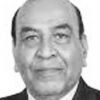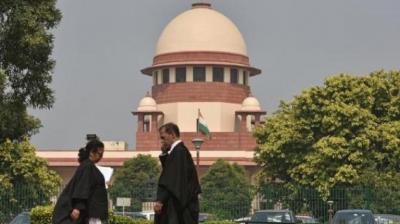Syed Ata Hasnain | What India should Expect from Shehbaz Sharif Government
First, an anti-India stance is perceived to create nationalist fervour, although it is hardly ever an electoral issue.
With the PDM 2.0 government now embedded in Pakistan and Imran Khan’s vitriolic outbursts against India behind us, can we now expect any improvements in India-Pakistan relations? For the better part of the past two years Pakistan has been hamstrung by political instability and internal turbulence. The earlier PDM 1.0, which was also led by Shehbaz Sharif, had made no serious effort at trying to bring change either, although it generally ignored the domain of India-Pakistani relations but also cut down on vitriol; the economic abyss into which it had sunk perhaps gave it very little opportunity to pursue regional policy with any seriousness. To give it the benefit of doubt, perhaps the internal security situation and the problems on the Afghanistan border also restrained it from looking at relations with India. Logic now dictates that with an effective ceasefire in place along the Line of Control in Jammu and Kashmir for the past three years, Pakistan could do well to reduce its own concerns about the eastern border by stabilising the relationship with India, or at least displaying some propensity towards that. It was Gen. Qamar Bajwa, the former Army Chief, who through his long tenure often mentioned the need for Pakistan to pursue peace with its neighbours in order to create the environment for its own growth and development. He mostly contradicted himself soon thereafter by some negativity over Kashmir, which diluted the potential narrative he was projecting. His successor, Gen. Asim Munir, a former D-G of Inter-Services Intelligence and a man considered less steeped in knowledge of strategic issues, has made his stance very clear. In a statement by him in January 2024, Gen. Asim Munir said that “since New Delhi has not reconciled with the concept of Pakistan, then how can we reconcile with it”. Again, giving to him the benefit of compulsions of a weaker state, can he rise above the ordinary and attempt something transformational to change the state of relations with India or even an initiative towards that. That is an interesting analogy to examine further.
For the last many years Pakistan has pursued a foreign policy for its short-term gains and invariably denied itself the need to find peace on its eastern border to dilute its own security needs and invest necessary funds in strengthening internal resilience.
The leadership somehow remains obsessed with J&K and finds that this policy offers many advantages.
First, an anti-India stance is perceived to create nationalist fervour, although it is hardly ever an electoral issue. The perception still prevails that talking peace with India will fetch negative electoral dividends. Second, it gives the true masters of its destiny, the Pakistan Army, enough cause to pursue the obsessive, suicidal and failed strategy of Zia-ul Haq; the one which seeks retribution against India for the loss of the former East Pakistan. The timeless bogey that is India remains the ideal whipping boy to activate the similarly timeless slogan – “Pakistan khatre mein hai” (Pakistan is in danger). What can change Pakistan’s attitude and the approach of its armed forces?
Politically, not much can be expected. With a hung legislature and a coalition to boot, no single party can take the initiative. There are Prime Ministers-in-waiting ready to launch their individual or party campaigns the moment an opening is sensed. Bilawal Bhutto Zardari, young and ambitious, may view himself as the messiah who would revenge India for the ignominy that his grandfather faced with the defeat in former East Pakistan and in Shimla in 1972. For his PPP, the tactical soft pedalling towards India is fine, but nothing more.
The belief that the influence of Nawaz Sharif and the wisdom of his years may have tempered him to guide the coalition to the best option for Pakistan to overcome its economic and security problems — to make peace with India — is also misplaced. Nawaz Sharif has to also feather the nest for his daughter Maryam, who has just got a man-sized job as chief minister of Punjab. She is a future PM aspirant and Nawaz or the PML(N) would not want to damage her prospects by being the authors of peace with India.
Pakistan’s educated citizenry and the media are mature and will always counsel peace as the only way that Pakistan can escape the clutches of complete bankruptcy. Climate change will bring much more havoc to Pakistan and render it thirsty when the need for water arises in summer. Pakistan will by then be an Asian Somalia and a pariah for the world.
Lack of water and an already failing economy, coupled with low levels of manufacturing due to a power deficit and shortage of raw material, will bring Pakistan to its knees. The raging radical militancy and terror, that thrives on low education levels, will wish to see such a state of Pakistan. Sense will probably prevail when all these predictions finally stare it in the face and the Pakistan Army faces internal dissension, something that is already evident.
Will the international community, led by the United States, let Pakistan wallow in the sinkhole it has dug for itself. We have always believed that for the US Pakistan is the most relevant real estate. It has demonstrated direct control over its strategic decisions in the last few years while preventing its economy from sinking further. Will it do so again and will India be factored into being part of the potential solutions, howsoever temporary. The US will not wish to see China gaining influence in any way and bringing India into any solution would run the risk of Pakistan looking more to link closely with China.
Ultimately, it will be money that will decide which way the cookie crumbles. In a quandary, the US turned to Pakistan to sell ammunition to Ukraine and underwrote the almost $900 million it cost Ukraine in the “bombs for bailout” arrangement.
Pakistan was otherwise known to favour the China-Russia combine but found no options here. Can the US pull off a diplomatic solution through which Pakistan stabilises its eastern border and India sees a dilution of covert and overt threats on its western border. Pakistan can then focus on its western border and India on its northern front. Under deep Pakistani compulsion, such an arrangement may perhaps be possible.
However, in a year when the United States is under siege through the political battle between two old men battling for the presidency, and the wars in Ukraine and Gaza continuing to rage, such thoughts for South Asia may be utopian.



















